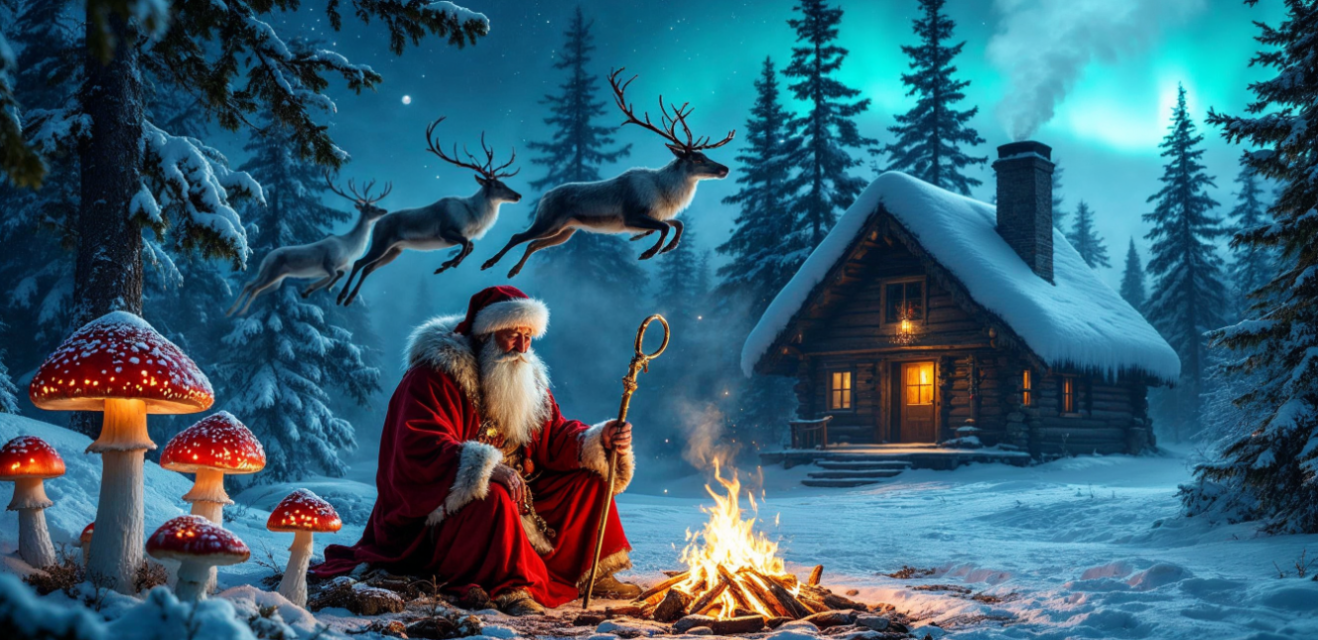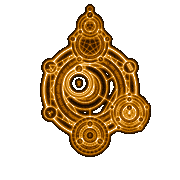Amanita Muscaria and the Santa Claus Myth: A Fascinating Shamanic Origin

Amanita Muscaria and the Santa Claus Myth: A Fascinating Shamanic Origin
The modern image of Santa Claus, this jovial figure dressed in red and white, traveling in a sleigh pulled by reindeer, may conceal a much older origin rooted in the shamanic practices of the Arctic regions. The association between Santa Claus and Amanita muscaria, the red mushroom with white spots, reveals a complex story intertwining spiritual traditions, ancient myths, and cultural transformations. Let’s explore the mystical and cultural elements that link this legendary mushroom to one of the most iconic figures of our time.
The Colors of Amanita: A Sacred Garment
The red and white colors of Santa Claus are no coincidence. In the Arctic and Siberian regions, shamans wore red robes trimmed with white fur to endure the extreme winter conditions. This clothing choice, initially practical, became a powerful symbol in their rituals. These robes, which immediately recall Santa's modern costume, also served to honor the Amanita muscaria, a sacred mushroom whose colors represented a connection between the physical world and spiritual realms.
Shamans viewed Amanita as a mediator between humans and spirits. By harvesting these mushrooms under pine trees – which later became symbols of Christmas – they forged a connection between the earth and the cosmos. These harvests were carefully dried, sometimes hung in socks near the fire to speed up the process. This tradition, eerily similar to hanging stockings by the fireplace at Christmas, offers a glimpse into how ancient practices have survived through the ages.
The Chimney: A Portal to the Sacred
In Arctic regions, where winter is harsh and doors often blocked by snow, shamans found a practical and symbolic solution to enter homes: the chimney. This act was not merely a logistical necessity but carried strong spiritual significance. By descending through the chimney, shamans brought spiritual gifts, often in the form of dried Amanita muscaria, used in rituals to bless the home and its inhabitants.
This detail, seemingly anecdotal, has influenced how we imagine Santa Claus today: a magical figure who descends the chimney to deliver gifts. The act of entering the hearth can also be seen as a spiritual metaphor, symbolizing the transition between worlds and the infusion of sacred energy into a domestic space.
Reindeer: Mystical Allies of the Shamans
Reindeer, emblematic animals of polar regions, play a central role in this story. Known for their appetite for Amanita muscaria, these animals readily consume the mushrooms in their natural habitat. After ingestion, reindeer exhibit unusual behavior: they jump excessively, appear disoriented, and sometimes give the impression of flying. These observations nourished the imagination of indigenous peoples, who saw such behaviors as manifestations of the mushroom's mystical power.
Shamans, observing these effects, also incorporated reindeer into their rituals. In some cases, they consumed the urine of reindeer that had eaten Amanita muscaria, a practice aimed at harnessing the psychoactive compounds of the mushroom while reducing its toxicity. This connection between reindeer, the mushroom, and mystical flight likely inspired the idea of flying reindeer pulling Santa's sleigh.
A Ritual Transformed: From Spirituality to Popular Culture
Over the centuries, these shamanic traditions were adapted and reinterpreted through various cultural lenses. With the rise of Christianity in Europe, local spiritual practices were often assimilated and reinvented. Santa Claus, as he is known today, is the result of many converging influences. Yet, traces of ancient rituals persist in the symbols:
- Red and white colors: Originally linked to Amanita muscaria, they now evoke the joy and energy of Christmas.
- Flying reindeer: A magical interpretation of the behaviors induced by the mushroom.
- The chimney: A direct legacy of Siberian practices connecting the worlds.
In the 19th century, poems like A Visit from St. Nicholas (better known as The Night Before Christmas) and Thomas Nast's illustrations popularized this jovial and benevolent figure. The influence of shamanic traditions, though obscured by time, remains present in these representations.
A Universal Symbol of Magic and Renewal
Beyond its shamanic roots, Amanita muscaria embodies universal themes that resonate deeply during the holiday season:
- Transformation: The mushroom acts as a catalyst for change, opening portals between worlds.
- Renewal: Associated with winter rituals, it symbolizes the transition into a new year.
- Spiritual generosity: Shamans shared the blessings of the mushroom to strengthen community bonds.
Today, Christmas is celebrated as a festival of love, sharing, and magic. Understanding the mystical origins of these traditions enriches our appreciation of these modern symbols.
Rethinking Christmas Through a Mystical Lens
What if, as you admire your Christmas decorations this year, you saw more than just tradition? Imagine Siberian shamans, dressed in red and white, bearing offerings of Amanita muscaria, descending through the chimney to bless a household, while their reindeer leap in the snow under the influence of the magical mushroom. These images are not merely relics of the past but bridges between spiritual and cultural dimensions.
Christmas, with its sparkling lights and celebrations, remains deeply rooted in a quest for magic and mystery. Behind every gift, every decorated tree, and every hanging stocking lies the echo of ancient traditions where nature, spirituality, and community intertwined.
So, this year, why not honor these connections by celebrating Christmas not only as a modern holiday but also as a tribute to the mysteries of the natural world and humanity's spiritual heritage? ?✨

















Comments : 0